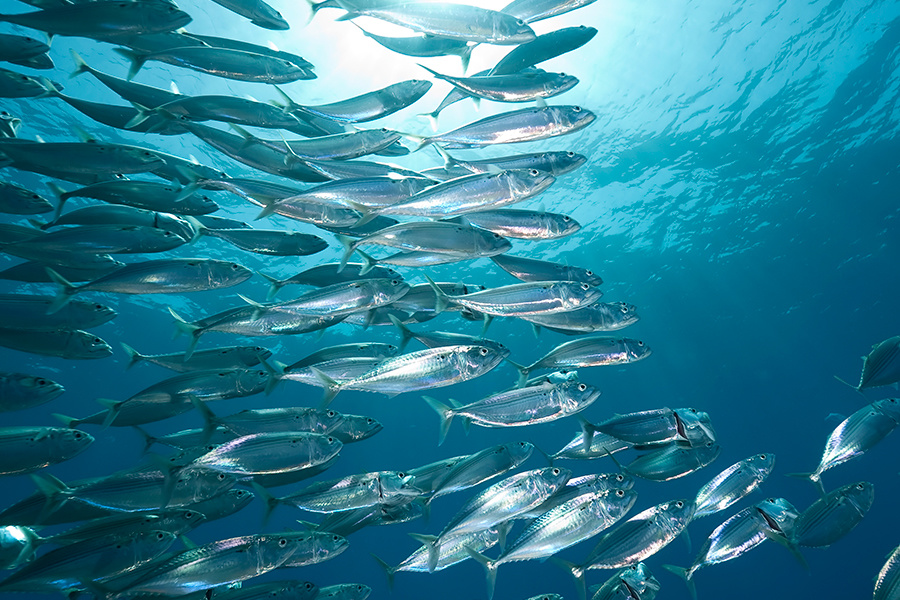Atlantic Mackerel Deserve a Break!!
/Why it’s time to shut down the fishery—and finally give this species a real chance to recover.
A Vital Species in Trouble
Atlantic mackerel (Scomber scombrus) have long been a cornerstone of the marine food web and a prized target for both commercial and recreational fisheries along the U.S. East Coast. But in recent years, warning signs have grown impossible to ignore. Scientific assessments have raised red flags about the stock's health, prompting urgent calls for stronger management to prevent a total collapse.
Overfished for Decades
For decades, chronic overfishing was enabled by insufficient science and overly optimistic management frameworks. Management decisions were made using unreliable data—leading to unsustainable harvest levels that depleted the stock to dangerously low levels.
It wasn’t until 2018 that the first comprehensive, peer-reviewed stock assessment was completed. That assessment confirmed that:
The Atlantic mackerel stock was overfished
Overfishing had been occurring for decades
And previous data were not reliable enough to guide sound management decisions
Since then, the Mid-Atlantic Fishery Management Council (MAFMC) has attempted to rebuild the stock—twice. Both efforts have failed.
A Pattern of Failed Rebuilding Plans
Framework 23: A Weak First Attempt
In 2019, the MAFMC responded to the 2018 stock assessment by implementing Framework 13, its first rebuilding plan. But the plan was inadequate from the start.
Catch limits remained too high for the depleted population. In 2021, a Canadian TRAC (Transboundary Resources Assessment Committee) assessment confirmed that:
The stock remained overfished
Overfishing was still happening—even under reduced catch levels
Under the Magnuson-Stevens Act, this triggered a legal requirement for a new rebuilding plan.
Amendment 23: A Second Still-Flawed Effort
In 2023, the MAFMC introduced Amendment 23, aimed at rebuilding the stock by 2032. The plan included:
A revised Acceptable Biological Catch (ABC) of 8,094 metric tons, with:
Deductions for Canadian catch (2,197 mt)
U.S. recreational catch (2,143 mt)
Commercial discards (115 mt)
Leaving a U.S. commercial quota of 3,639 mt
A 20-fish recreational possession limit
A three-stage closure system to reduce overharvesting
The problem? The plan relied heavily on pre-2009 data—including years before the stock crash and assessments previously deemed unreliable.
Conservationists Sounded the Alarm
At the final vote on Amendment 23, BNEC and other conservation groups warned that the plan was repeating the very mistakes that caused the crisis in the first place.
We urged the Council to:
Use only post-2009 data—when the collapse became evident
Base decisions on the best available science:
The 2018 benchmark assessment
The 2021 TRAC report
The 2023 update
Reject overly optimistic projections that falsely assumed high recruitment and stock resilience
We warned that relying on outdated and inflated estimates would allow overfishing to continue—and stall recovery.
We were right.
A Tipping Point
In August 2023, NOAA Fisheries implemented emergency action and shut down the directed mackerel fishery for the remainder of the year. The most recent stock assessments confirmed that while overfishing had stopped, there was an “unexpected failure of the stock to rebuild,” and warned that overfishing could occur again if 2023 catch limits were met.
New adjusted catch limits for 2024-2025
These adjustments include:
Reduced ABC: Lowered to 3,200 mt
Reduced Commercial Quota: Lowered to 868 mt
The Law Is Clear
Under the Magnuson-Stevens Fishery Conservation and Management Act (MSA):
Overfishing must stop immediately
A rebuilding plan must be implemented within two years
The stock must be rebuilt within 10 years, unless prevented by environmental conditions
These mandates are not optional. They exist to protect the long-term health of fish populations—and the communities that depend on them.
Atlantic Mackerel Deserve a Break!
Atlantic mackerel have been pushed to the brink by decades of mismanagement. Weak rebuilding plans, inflated assumptions, and political compromises have delayed real recovery.
Closing the fishery is not just an emergency stopgap—it’s a legal and ecological imperative.
It’s time to give this species the break it needs—and rebuild a fishery that can actually last.



